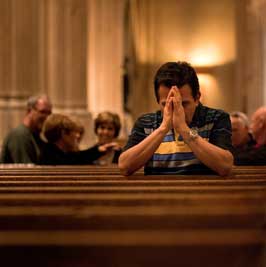THE BENCHMARK PROJECT
The Benchmark Project is the most distinct, targeted and tailored form of the ILCG projection models. The Benchmark Project develops a benchmark objective which represents a composite of the upper percentile of growing, successful churches. Benchmark objectives are established for spending patterns related to programs, non-clergy staff and facilities. A similar examination of the local church is conducted, where spending patterns related to programs, non-clergy staff and facilities are quantified. The benchmark spending patterns are then compared to the local church spending patterns and the spending opportunity for each objective is measured. With spending opportunities measured, a projection can then be established which can predict church growth based on equilibrating local spending patterns to those of the benchmark composite.
A critical part of the successful implementation of any changes related to equilibrating local spending patterns to Benchmark spending patterns is the development of a Local Church Advisory board to administer and determine specifically how new funds will be allocated. This establishes a new level of ownership between the givers and the targeted ministry.
The Benchmark Project is conveniently segmented into three year long implementation and evaluation periods. Year 1 and Year 2 are supported by generous off budget donor giving. By Year 3 of the program we find that a portion, and in some cases possibly all, budget line items associated with the new programs or non-clergy staff positions prescribed by the Local Church Advisory board can be absorbed into the regular operating budget of the church because of the increase in worship attendance and the follow on increase in giving to the overall operating budget.
As part of the Benchmark Project ILCG has developed tools to monitor progress and assess performance metrics relative to goals and objectives outlined in the Benchmark Project Report. Advisers from ILCG work closely with the local church to ensure the program is adequately supported and set on a path for success.
WHAT WE DID
-
Identified subject church deficiencies relative to benchmark church in programs and non-clergy staff spending patterns
-
Established a budget baseline that would close the spending deficiencies between subject church and benchmark church which led to an increase in worship attendance
HOW WE DID IT
-
Identified shifting demographic landscape of neighborhood of subject church
-
Analyzed historical worship attendance and annual giving patterns
-
Analyzed resources dedicated to programs and non-clergy staff
Local Church Model Flow
- Establish Relevant Tier Growth Benchmark Spending Patterns
- Programs
- Non-Clergy Staff
- Facilities
- Savings
- Loans
- Examine Local Church Specific Spending Patterns
- Programs
- Non-Clergy Staff
- Facilities
- Savings
- Loans
- Gap Analysis — Measure Spending Opportunities
- Predict Impact on Average Worship Attendance
- Evaluation and Recommendation
- Cost/Benefit
- Investment Opportunity/Return in Giving

Why We Do It
The world is missing out on the hope, truth, and power of the Gospel. The local church remains the best vehicle by which its message is spread. The secular press continues to challenge the work of the Church with its predictions of decline and rejection among the younger generations. Instead, the local church can grow and prove its capacity to change lives and communities. Growing Christian churches among our mainline denominations and beyond is a real possibility.

What We Use
- Local Church Geodata
- Local Church Indicators: Worship Attendance and Congregational Giving—past 5 years
- Local Church Spending Patterns—Past 5 years
- Pastoral leadership—Past 10 years
- Establishment of Benchmarks
- Statistical projections—Next 5 years

What We Do
ILCG works side by side with local church leaders to identify internal deficiencies through comparisons with thriving peer group outcomes. Comparisons bring broad solutions that are refined or customized by local church leaders. In the end, the local church becomes more effective in ministry to community and in making disciples of Christ.

How We Do It
ILCG takes a comprehensive approach to measuring and understanding the impacts of the changing composition of churches. Based upon statistical analyses of over 1 million local church records—about 32,000 churches over 28 years — sophisticated simulation models have been developed to scrutinize past experience, clarify present standing and discern the factors that provide the foundation for a vibrant future.


